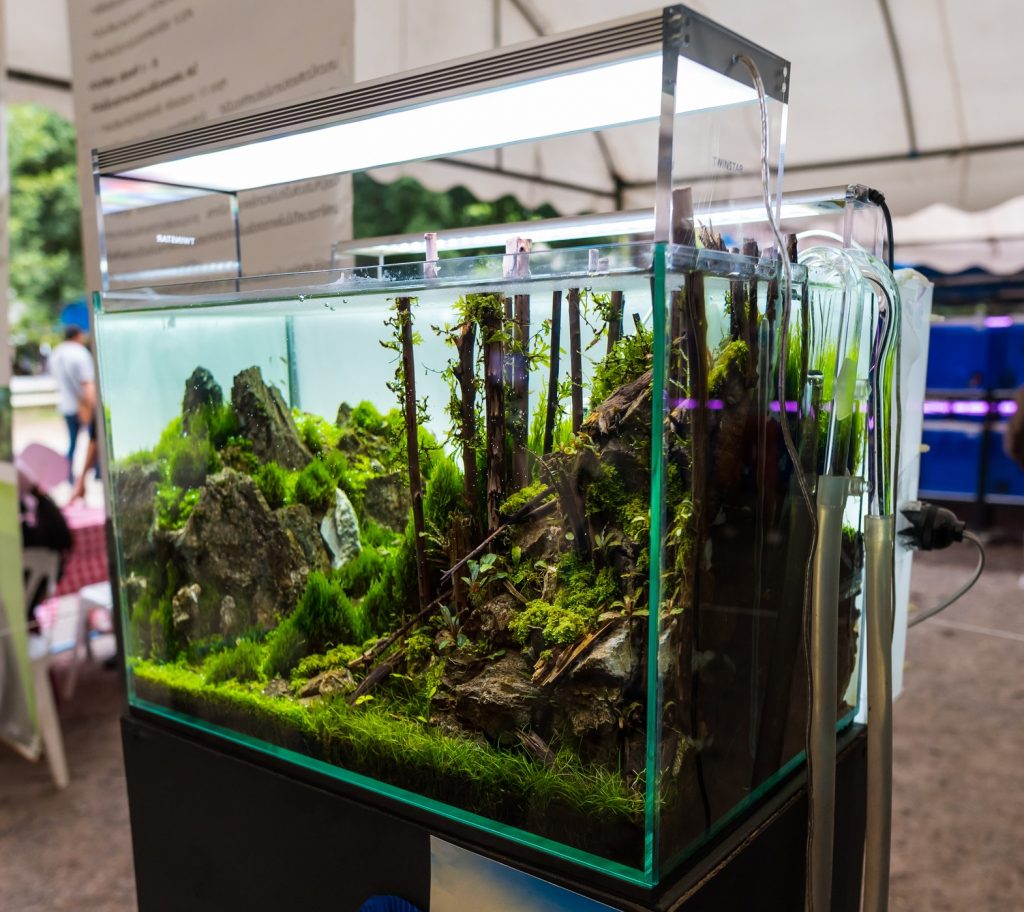Fish can be a simple and easy pet to have around. They provide you with companionship without ever being too cumbersome. But, sometimes it isn’t easy to know what exactly a fish needs. If you are fond of fish-keeping in an aquarium, you might have wondered, do fish really need an aquarium light?
Yes – fish do need an aquarium light! As living beings, fish need a period of light and darkness to maintain their natural sleep-wake cycle. Aquarium lights keep them active and energetic for part of the day, while the period of darkness provides them the idea that it is time for rest.
However, the type and duration of lighting depend on several factors. These include the type of fish and water conditions. Therefore, it is essential to know how the aquarium light affects the fish, as well as a few facts that you should keep in mind while using the light.
Table of Contents
Why Do Fish Need an Aquarium Light
Although fish do not need light for their navigation, there are some other aspects for which the aquarium light plays important roles.
Circadian Rhythm in Fish
Most living beings, including fish, follow the circadian rhythm. The circadian rhythm basically works as an internal body clock. This body clock regulates the cycle of alertness and sleepiness with a routine interval. Fish can perceive the circadian clock through the presence or absence of light.
This study on Research Gate describes in detail how the circadian rhythm plays a significant role in the development of fish as well as their daily activities such as feeding schedule and sleep. Now you have an idea why an aquarium light is so important!
Effect of Light on the Behavior of Fish
Lighting influences the fish’s behavior in the aquarium. For example:
- Proper lighting stimulates the fish to engage in activities such as eating and swimming. As they can see the food better in light, they often eat better, and you can observe how lively they are!
- The metabolism and oxygen intake of the fish are also affected by the lighting.
- With a continuous absence of light, fish may exhibit erratic behavior. They may become sluggish and lie in the bottom of the tank instead of being playful. Sometimes they may also get stressed and aggressive with the other fish in the tank.
Effect of Light on Fish Health and Color
The aquarium light helps enrich the pigments in fish skin that makes their color appear even brighter and prettier. Their overall health also gets improved. You may notice a fading of color if the lighting is not right, which signals the fish’s poor health.
An aquarium light can also provide some warmth in the water, which is particularly beneficial for tropical fish. However, be careful while choosing the light so that it does not cause overheating in the tank water.
A fluctuation in temperature may also hamper the fish’s natural activities, and they may swim towards the area where it is comparatively colder or more comfortable.
Effect of Light on Aquarium Ecosystem
Aquarium light is also essential for the growth of aquatic plants and thus maintains biological equilibrium in the aquarium. If you have living plants in the fish tank, light is necessary for their photosynthesis.
Through the photosynthesis process, plants produce food for themselves and release oxygen. Hence, proper lighting contributes to the nutrition and well-being of fish and maintains a healthy ecosystem in the aquarium.
How Long Should You Keep the Light On?
Now that you know the importance of an aquarium light, would you want to keep the light on all day? Certainly not! It is always suggested to mimic the condition of the fish’s natural habitat. Hence, you may artificially schedule the timing of sunrise and sunset.

The typical range of duration for keeping the light on is 8 to 12 hours per day. Other times you should turn off the light as fish need darkness for sleeping.
The length of time you keep your aquarium light on will vary based on what you have in your aquarium. For instance, if your aquarium has tropical fish and live plants, you will need to leave your light on for approximately 12 hours each day. Coldwater fish with live plants only need about 8 hours of light per day. And, if you have a fish-only aquarium without live plants, you can use your aquarium light for slightly less than 8 hours each day.
Be sure to keep consistency in light exposure every day. You can use a timer to keep track or even use a smart lighting system with an integrated timer setting.
Disadvantages of Too Much Light in the Aquarium
What will happen if you keep the light on forever or use lighting that is too bright? As you can guess, too much lighting can have adverse effects on your fish and your entire aquarium.
- Continuous exposure to light can cause stress to your fish. They may lose their appetite, hide most of the time, or show hostile behavior to the tankmates.
- Too much light can increase the algae in your tank. Although plants in the tank need light for a certain period, too much light results in algae intrusion in the aquarium. As a result, there will be competition for the nutrient available, and the live plants and fish will be affected. An abundance of algae will lead to more absorption of the available carbon dioxide (CO2) in the aquarium water. As CO2 is an essential element for the living plants’ photosynthesis, the plant growth will be disturbed. Not to mention the hassle you will go through to get rid of the algae!
- Too much light is not only bad for your aquarium, but it is also bad for your pocketbook! Of course, you would never want to pay extra bills for keeping the light on unnecessarily.
Choosing the Right Type of Aquarium Light
You should ensure appropriate aquarium lighting based on the following factors:
- Type of water (freshwater or saltwater)
- Types of species such as fish, plants, and reefs
- Size of the tank
There are two important terms that you should know about when looking at aquarium lighting:
1. Light spectrum: The light spectrum denotes the temperature or warmth of the light in terms of color. Visible light spectrum ranges from 380 nm (violet) -700 nm (red).
The color temperature is often indicated by ‘Kelvin Rating’ or K-rating. A lower K-rating suggests that the light is more yellow, whereas a higher K-rating means that the lighting appears whiter or bluer.
The typical range of K-rating is 5000 K (suitable for shallow-water fish) to 20000 K (suitable for deep-water fish).
2. Light intensity: Light intensity refers to how bright or intense the light is. It measures in the unit of watts, i.e., the amount of energy used. The higher the wattage, the more intense the light is.
The combination of the light spectrum and light intensity should be such that it best matches the natural habitat of the fish as well as suitable for the aquatic plants.
Types of Aquarium Light
Natural sunlight coming to the room is often insufficient during the wintertime, and it may get too bright during the summer days. That is why it is always recommended to install an artificial aquarium light instead of relying on the natural sunlight.
Some common types of aquarium lights are:
- Standard Output Fluorescent Light
- High Output (HO) Fluorescent Light
- Very High Output (VHO) Fluorescent Light
- Compact Fluorescent Light
- Metal Halides
- LED (Light-emitting diode) lights etc.
There are no hard and fast rules for selecting the best light. However, considering all the factors mentioned above, you can choose the most suitable lighting according to your need, budget, and preferred maintenance liabilities.
So, choose your lighting wisely and admire the magnificence of your beautiful aquarium!




